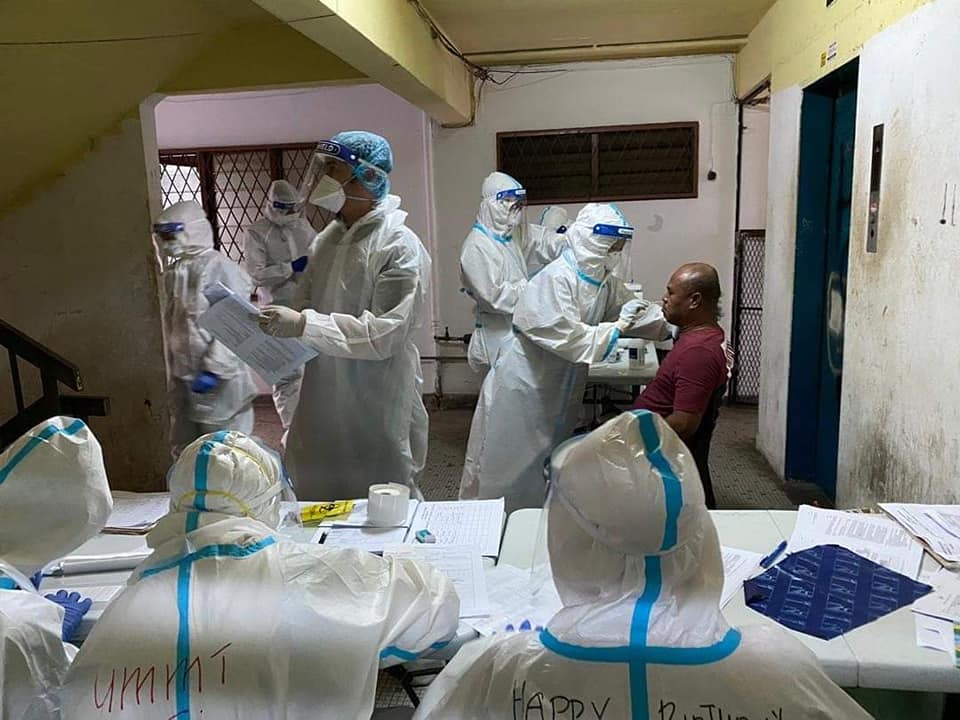“Pre-Symptomatic Covid-19 Patients Are Contagious. The viral load is high two to three days before symptom onset”, says the Director-General of Health, Malaysia during his 1 June briefing.
On 31 May, he was widely quoted to have said that “asymptomatic patients were not able to infect others because their virus load is low” by all the local news.
Immediately the buzz on doctors’ WhatsApp groups: “political statement or medical based?”, “is that widely accepted that asymptomatic cases is equivalent to near-zero infectivity?”, “I have not seen other authorities make that statement”, “DG pushed by politics to get people back out or new tactics to get herd immunity?”, “problem is how to know who is pre-symptomatic”, “worry, silent spreader”, “misquoted, I think”.
Indeed the DG had been misquoted, I guess, by the media who must have been so happy to share good news for a change! But, what is the point of talking about the role of pre- or asymptomatic cases in Covid-19 transmission?
The Stealth SARS-CoV-2 War Strategy – Our Current Understanding
- Exit infected host, preferably as soon as possible before symptoms appear. Before infector realise he has been invaded (i.e. pre-symptomatic).
- Hitchhike on airway aerosols and air-droplets, launched as he speaks, shouts, sings, coughs or sneezes, preferably (unmasked) in closed, crowded spaces.
- Remain infectious for variable periods airborne or wherever droplets land or on infectors’ hands and body.
- Contact breathes in aerosols or droplets, or transfers viruses that have landed on furniture, fomites or door handles when he touches contaminated surfaces.
- Virus invades the airway of infectee. Round One to Covid.
- This period between the exit of virus from infector and the invasion of new host is called the “serial interval” (remember “serial killer”).
The serial interval between successive cases in a chain of transmission is generally estimated from the interval between observable clinical onsets of the infector and the contact he passed the virus to.
If the serial interval is very short, prompt contact-tracing to prevent the second or third generation of cases becomes a matter of great urgency.
Unfortunately, the field turn-around time of Covid-19 RT-PCR nasal swab test results is two to three days, and transmission may occur before clinical symptoms become obvious. We can understand, now, the challenge for public health staff rushing to locate, test and isolate potentially infected close contacts, before they spread to others.
When contacts of known cases hide and only come forward for testing when they start feeling really sick, the second generation of infection will already have begun. Then, they might be “malu” (ashamed) to say they were contacts of the first case, and give inaccurate source history that will send our overworked health inspectors on a wild goose chase, wasting valuable tests and time.
This is where the use of IT contact location apps become so useful even though some countries oppose it over personal confidentiality issues.
Initially it was thought that Covid-19 being a coronavirus might behave like SARS. The serial interval for SARS was seven days (Lipsitch, M et al (2003).
“Transmission Dynamics and Control of Severe Acute Respiratory Syndrome” Science. 300 (5627):1966-1970 doi:10.1126/science.1086616).
For Covid, it is estimated to be four to eight days (Park, Minah et al. (2020-03-31). “A Systematic Review of COVID-19 Epidemiology Based on Current Evidence”. Journal of Clinical Medicine. 9 (4). doi:10.3390/jcm9040967).
If the observed mean serial interval is shorter than the observed mean incubation period, this indicates that a significant portion of transmission may have occurred before infected persons have developed symptoms (i.e. pre-symptomatic transmission).
Covid-19 Incubation Period – Mostly 4 To 5 Days Up To 14 Days
The period between exposure to infection and the appearance of first symptoms for Covid-19 case is thought to extend to 14 days, with a median time (middle value if arranged from earliest to latest) of four to five days. 97.5% of those who develop symptoms will do so within 11.5 days.
Note: Pre-symptomatic relates to the early stages of a disease before all the symptoms have developed and therefore accurate diagnosis is not possible.
An asymptomatic patient is one who has the infection or disease but experiences no symptoms — also called sub-clinical infection (Wiktionary.org)
25% adult and 27-29% child Covid-19 cases may never know they have been infected because they have no symptoms at all i.e. asymptomatic or sub-clinical cases.
Covid-19 Signs & Symptoms
Over the course of the infection, most cases will experience the following: fever (83–99%), cough (59–82%), fatigue (44–70%), anorexia (40–84%), shortness of breath (31–40%), sputum production (28–33%), myalgia (muscle aches) (11–35%).
Respiratory symptoms and fever may present later in older adults and those with medical co-morbidities. In one study of 1,099 hospitalised patients, fever was present in only 44% at hospital admission but later developed in 89% during hospitalisation.
Headache, confusion, rhinorrhoea (runny nose), sore throat, hemoptysis (blood in sputum), vomiting, and diarrhoea have been reported but are less common (<10%). Atypical presentations include diarrhoea and nausea prior to developing fever and lower respiratory tract signs and symptoms.
Research is ongoing on whether anosmia (loss of smell) or ageusia (loss of taste) precede the onset of respiratory symptoms in Covid-19. Of the 88 patients in a Milan hospital, 29 could not be interviewed (four dementia, two language barrier, 23 on non-invasive ventilation). Of the 59 interviewed, 20 (33.9%) reported at least one taste or olfactory disorder and 11 (18.6%) both.
(Self-reported Olfactory and Taste Disorders in Patients With Severe Acute Respiratory Coronavirus 2 Infection: A Cross-sectional Study by Andrea Giacomell et al https://doi.org/10.1093/cid/ciaa330)
Covid-19 Children Have Similar But Milder Signs And Symptoms Than Adults
R Castagnoli identified 815 articles published between 1 December 2019 to 3 March 2020. Eighteen studies with 1,065 participants (444 patients were younger than 10 years, and 553 were aged 10 to 19 years) were included in the final systematic review. All articles were from China, except 1 clinical case in Singapore.
Children at any age were mostly reported to have mild respiratory symptoms — fever, dry cough and fatigue — or were asymptomatic.
Bronchial thickening and ground-glass opacities were the main radiologic features, and these findings were also reported in asymptomatic patients. There was only one case of severe Covid-19 infection, which occurred in a 13-month-old infant.
No deaths were reported in children aged 0 to 9 years. Most children with Covid-19 presented with mild symptoms, if any. They generally required supportive care only, and typically had a good prognosis and recovered within 1 to 2 weeks. Available data about therapies were limited (Severe Acute Respiratory Syndrome Coronavirus 2 (SARS-CoV-2) Infection in Children and Adolescents: A Systematic Review 22 Apr 2020 Riccardo Castagnoli et al : 10.1001/jamapediatrics.2020.1467).
Pre-Symptomatic Covid-19 Infectivity Confirmed By Epidemiological Reports
Potential pre-symptomatic transmission of SARS-CoV-2 was suspected in Zhejiang, China. In January 2020, Zhen-Dong Tong et al identified two confirmed symptomatic Covid-19 cases after their exposure to a pre-symptomatic person who was later diagnosed with laboratory-confirmed Covid-19. The two persons transmitted SARS-CoV-2 to three family members, who did not report any symptoms at the time their infections were detected.
Merle Bohmer reported on an outbreak of Covid-19 in Germany resulting from a single Travel-Associated Primary Case (31 Mar 2020). Case #0 was a Chinese person who visited Germany for professional reasons. Sixteen subsequent cases emerged in four transmission generations.
Median incubation period and serial interval were 4.0 days respectively. Transmissions occurred frequently pre-symptomatic, on day of symptom onset and during prodromal phase (symptoms other than fever and cough for ≥1 day at the beginning of illness phase).
Attack rates were 75% among members of a household cluster in common isolation, 10% among household contacts only together until isolation of case, and 5% among non-household high-risk contacts.
Serial Interval Of Novel Covid-19 Infection
Hiroshi Nishiura studied 28 infector-infectee pairs and found the median serial interval was 4.6 days, which is close to or shorter than its median incubation period. This suggests that a substantial proportion of secondary transmission may occur prior to illness onset.
Places with active case finding would tend to have a higher proportion of pre-symptomatic transmission, mainly due to quick quarantine of close contacts and isolation. Outbreak data of clusters where active case finding was implemented estimates the proportion of pre-symptomatic transmission to be 48% for Singapore and 62% for Tianjin. The mean serial interval was 5.20 days for Singapore and 3.95 days for Tianjin.
The short serial interval implies that contact tracing methods must compete against the rapid replication of case generations. The number of contacts may soon exceed what available health care and public health workers are able to handle.
Temporal Dynamics In Viral Shedding And Transmissibility Of Covid-19
According to Xi He et al., RT-PCR was done on a total of 414 throat swabs collected from 94 patients, from symptom onset up to 32 days after onset. High viral loads were detected soon after symptom onset, which gradually decreased towards the detection limit at day 21.
He inferred that infectiousness peaked on or before symptom onset.
Based on the public records of 77 infector–infectee transmission pairs, He estimated a mean serial interval of 5.8 days and that 44% of secondary cases were infected during the index cases’ pre-symptomatic stage.
Take-Home Message
Along with many others, this study highlighted a critical period of 24 to 48 hours before the visible onset of the disease, in which people can be highly infectious, perhaps even at their most infectious.
The definition of contacts should cover two to three days prior to symptom onset of the index case, as has been done in Hong Kong and China since late February.
Prompt contact tracing, testing, and isolation would still be important measures to block silent super-spreaders.
With a substantial proportion of pre-symptomatic transmission, everyone can protect themselves by enhanced personal hygiene (mask, hand hygiene) and social distancing.
These would likely be our secret weapons for community disease control of a stealth virus like SARS-CoV-2.

A fusion opinion from a Sarawakian public health specialist, pediatrician, ex-associate professor, disaster relief and medical volunteer, passionate about helping people learn.
- This is the personal opinion of the writer or publication and does not necessarily represent the views of CodeBlue.








